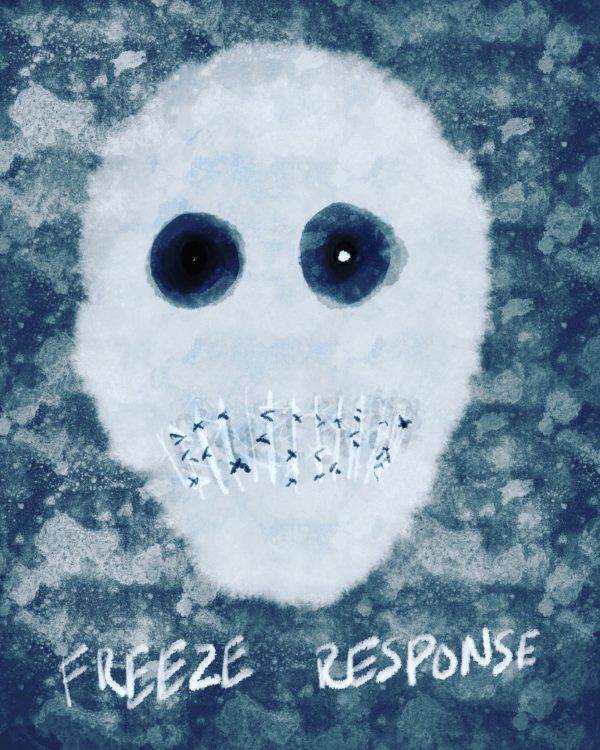How Art Can Help a Person Heal From Trauma
Editor's Note
If you have experienced emotional abuse, the following post could be potentially triggering. You can contact the Crisis Text Line by texting “START” to 741741.
Most of us can remember some of our art projects in elementary school, or perhaps earlier. In those days of youth, we gleefully made marks with crayons on construction paper without a second thought to how someone else might judge the art. We didn’t talk about innate talent or skill. We certainly didn’t compare our art to someone famous on Instagram or Twitter. At that time the art-making was for us, we made it purely to express ourselves.
Unfortunately, as we got a little older, things probably started to change. Maybe you saw some kids were being encouraged by their parents and teachers, receiving more compliments on their artwork. You might have started to look at your own art with a more judgmental eye. As a boy, maybe you were told that making art is girly and you should be playing sports or video games instead. If you had immigrant parents like me, you might have felt a lot of pressure to focus on your grades and told that artists don’t make any money.
When we are young, we are incredibly malleable, and all these negative messages about art-making could have easily discouraged us. This is truly tragic, because making art is an incredible way to connect to our deeper selves and heal from trauma by expressing emotions that we cannot convey in words. It is an especially powerful tool for healing from early developmental trauma, because this type of trauma occurs before we have the ability to even use words.
As someone with a history of complex post-traumatic stress, I have struggled with expressing myself openly and tapping into my own emotions because of my tendency to shut down and go into the freeze response. Like fight and flight, the freeze response is something we experience when we are being traumatized. If we cannot escape the traumatizing situation or defend ourselves, the only thing left to do is to freeze and withdraw deep into our bodies where we cannot feel things at all. In everyday life, people who have been conditioned to freeze are usually the ones who stay quiet in conversations, tend to go with the flow and rarely express their opinions, and likely avoid stimulating situations as much as possible.
A common misconception about trauma is that it is something that has to be very extreme, like experiencing a war crime. The fact of the matter is that western civilization, with all of its social pressure to hold in emotions and work ourselves to death, is actually swimming with potentially traumatizing situations. As humans we are very good at shutting things out and ignoring our bodily sensations, which means the trauma can sit somewhere deep inside of us until it hits a breaking point. We do not want it to hit that breaking point, because that is when our bodies can become sick with chronic illness. By making art we can tap into some of that trauma and release it, thereby reducing our risk for chronic illness. The thing that is tricky about it is that we have to unlearn the idea that art needs to be a certain way, and stop judging what we make. There are great examples out there of outsider artists, people who started making art as adults with zero technical training. Some of them suffer from serious mental illness while others simply picked up art late in life. Their art flies in the face of modern movements and techniques, yet is uniquely raw and powerful. Looking at outsider art can often help to inspire us and encourage our own experimentation. Other similar terms worth searching include intuitive art, art brut, and folk art.
Let’s say you are staring down a blank piece of paper right now. The first step is to forget what you know about art-making. You’re not sitting down to draw a flower, or a tree, or a person. You are sitting down to express what is going on inside of you. Perhaps something going on inside of you right now has the qualities of a flower, or a tree, or a person, but your aim is not to draw a realistic version of that thing. Your aim is to draw what it feels like to you, with any color or shape that you feel compelled to use.
I also use the term drawing in the loosest sense possible. This process does not require a pencil or even a piece of paper. Perhaps you are making a collage or a sculpture. You could have paints or charcoal or ink. Maybe you want to try dipping your brush in coffee. Maybe you want to try editing photos or making video art. There are no rules to this process, so you can be as experimental as you want to be. Personally, I like to draw on my iPad because I can choose from hundreds of different digital brushes that I don’t have at home. Try to sit in silence and see what impulses come up, and work with those. If silence feels too oppressive, sometimes listening to music can help. Especially if a certain song gets you more in tune with your emotions.

Need more ideas or inspiration? If you have a bit of spare cash, there are loads of art therapy books you can buy online that share different exercises for getting started.
Another option are classes, such as this one on Domestika, which is all about tuning into emotions and drawing intuitively. Consider visiting your local art store and testing out different materials. It’s likely some materials and art making instruments will appeal to you more than others, so make sure to experiment. That being said, don’t underestimate materials you have lying around at home. For instance, collaging with old magazines and newspapers can be just as meaningful as painting with oils outside on an easel.
This article is just the tip of the iceberg when it comes to the world of intuitive and emotional artistic expression. Please continue to explore and experiment and check in with yourself occasionally. Even if you don’t believe you have experienced trauma, it is a powerful form of release. If you have experienced trauma, I cannot recommend it enough. Not only will it help to heal yourself, you will also create art that can resonate with other trauma survivors who are having trouble tapping into their emotions. That has been the case for with my art, and I’ve seen it occur with other artists as well. Happy art-making!
Follow this author’s journey with her artwork at traumahealingwithart.com.
Photo submitted by contributor.


